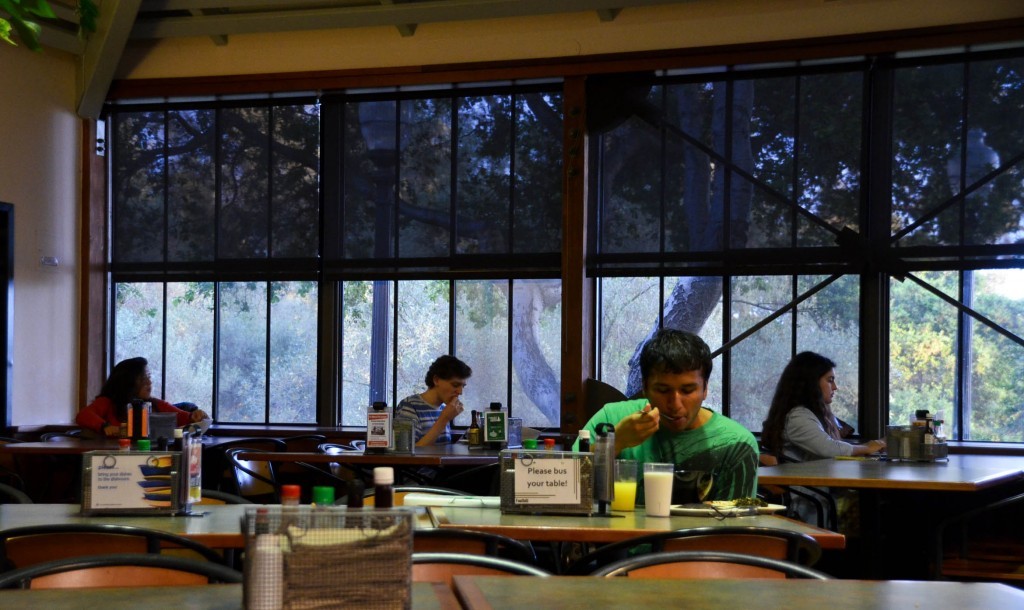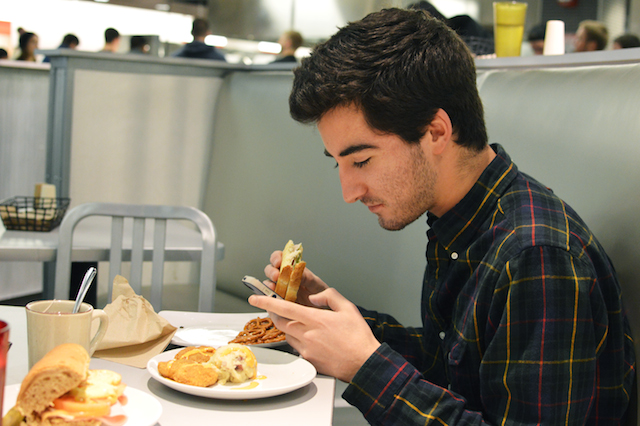The three-meals-a-day mantra that used to be followed diligently and enthusiastically has become nothing more than a sad, forgotten obligation. According to The New York Times’ article “Failure to Lunch” by Malia Wollan, “taking time off for lunch has increasingly become a sign of idleness.”
I feel that. My midday food breaks are often subconsciously regarded as work-time barriers, and are sometimes pushed to the side or hastily made up for on-the-go.
Living in a 12×15 dorm room doesn’t help. Not having an easily accessible kitchen — or enough space for a makeshift one — leads college kids like me to make use of the available space (my personal favorite being the desk keyboard pullout, it’s like a desk extension) as a dining table.
Not having a designated place to eat after microwaving a 1-minute meal (like these awesome microwave-friendly treats) leaves us to eating at our desks, something that Wollan said 62 percent of working professionals participate in at lunch.
In a Seattle Times article, “The death of the lunch hour,”, Susan Kelleher writes about how people don’t want to use any extra time or money to take a lunch break away from their desks.
“It’s as if the crushing demands on our time at work and outside of it have given us permission to eschew the hard-fought gains of industrial workers, whose harsh working conditions set the stage for the Fair Labor Standards Act of 1938, and subsequent state laws regulating meal breaks.
…’There seems to be more of a message of food as fuel to help get you through the day,’’ says Aimee Harvey, managing editor at Technomic, a Chicago-based research and consulting firm that tracks food-industry trends. ‘People are brown-bagging it. They don’t have time to take a full meal off-site.’”

Photo by Jocelyn Hsu
Kelleher and Harvey are right — and even though I’m years away from becoming a working professional, I’ve brown-bagged it on many busy school days. Two days a week, when I have just shy of 30 minutes for lunch between classes, you can find me eating something like a cold bagel and handful of crackers, with my computer screen to keep me company.
Not only is it rather lame, but there’s hardly any satisfaction or nutritional value – I need to be following these healthy-eating tips. On those days, I usually have to complement my excuse for a lunch with a significant mid-afternoon snack to keep me going until dinner.
I often find my mornings and afternoons interspersed with classes, and my evenings likewise with meetings, activities and social events. Finding time for schoolwork is rough, and instead of staying up later, working while eating is usually a more practical alternative. Late-night snacking, nonetheless, is super real, but here’s a guide to avoiding the guilt that comes in the morning.
That hustle-and-bustle American mindset that gave rise to the fast-food industry is the same notion that is slowly killing the social activity of grabbing a meal. People can no longer afford the time to sit down and have a conversation while eating together.

Photo by Rebecca Block
Instead, we resort to eating alone but distractedly: According to The Washington Post in its article “The most American thing there is: eating alone” by Roberto A. Ferdman, “[s]olo diners, so often enveloped in some kind of technology, show up [to restaurants] by themselves but occupied.”
It’s a safety blanket. Eating by myself without a screen to stare at forces me to look around and maybe even make eye-contact with other humans — something extremely intimidating and unwanted, as evidenced by the popularity of grocery store self-checkout lines.
The lonely lunch is an unhealthy habit, one that Wollan said, “detracts from our sense of the office as a collaborative, innovative, sociable space.” It’s a growing phenomenon fueled by packed schedules and technological dependency. It’s something we have total control over, but also none at all: sacrificing our computer-lunch date draws us away from the standardized American identity of rush and solitude.
We feel an obligation to have packed schedules and stay up-to-date on social media. So naturally, when eating alone, we feel the need to hold onto our devices — because that’s the American thing to do.
R.I.P., lunch.


